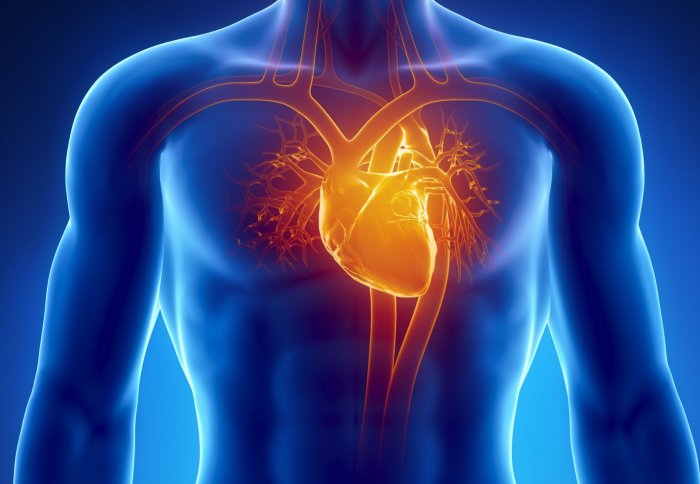

Scientists at Imperial College London have developed a model that helps explain why we are more likely to develop an abnormal heartbeat with age.
The simple mathematical model also suggests why current treatments for the condition are not always successful.
The model mimics how heart muscle tissue changes as we get older, focusing on how the muscle cells in the heart link together to pass electrical signals that create the heartbeat. Simulating these processes in the model has suggested new avenues for treating abnormal heart rhythms, but the results will need to be confirmed in experiments.
The research, published today in Physical Review Letters, is a collaboration between Imperial physicists and Nicholas Peters, Professor of Cardiology at Imperial’s National Heart and Lung Institute.
As we age, we develop fibrosis, which is when connective tissue grows within the heart muscle, cutting off the connections between the muscle cells. Our risk of atrial fibrillation - the most common abnormal heart rhythm and the single biggest cause of stroke – also increases with age, but the mechanism of how this develops is still not understood.
The model represents how cells are organised and connected within heart muscle tissue and how that changes with age. It was able to show that when fibrosis caused the ‘uncoupling’ of the muscle cells to reach a critical point, then atrial fibrillation would occur. The model also mirrored what’s known to happen in patients – that atrial fibrillation initially occurs for very short periods, which gradually get longer as the condition progresses.
Professor Kim Christensen, from Imperial’s Department of Physics, said: “The model we’ve created is a very simple representation, yet it is able to reproduce the behaviour of a very complex condition. It showed that atrial fibrillation only occurred when fibrosis within the heart muscle had reached a particular tipping point. This might offer a way in the future to assess the risk of developing the condition as well as inform possible treatments.”
Our work is a prime example of how a real, complex phenomenon can be studied with a simple model.
– Kishan Manani
Department of Physics
One common treatment for atrial fibrillation is a technique called ablation, where areas of the heart are destroyed by radiofrequency energy to prevent the disorganised signals occurring. However, there is limited evidence showing which areas should be targeted for ablation and the treatment is not always successful.
The model showed that if ablation was targeted at regions where the fibrosis had caused extensive uncoupling of the muscle cells, then the atrial fibrillation would stop. Although it’s possible to identify fibrotic regions in MRI scans, Kishan Manani, a PhD student from Imperial’s Department of Physics, stresses that simply targeting any kind of fibrosis isn’t the answer.
“Only a certain type of fibrosis, where the cells were structured in a certain way, appeared to cause atrial fibrillation in our model and it was only when these areas were targeted that the fibrillation would stop,” he explains. “Unfortunately, it’s not currently possible to identify cellular structure at this level within patients, but our findings do highlight where future research could be targeted. Our work is a prime example of how a real, complex phenomenon can be studied with a simple model. What we’ve essentially provided in the model is a hypothesis that now needs to be tested experimentally.”
Reference: 'Simple Model for Identifying Critical Regions in Atrial Fibrillation' by Kim Christensen, Kishan A. Manani and Nicholas S. Peters, Physical Review Letters, 16 January 2015. DOI: http://dx.doi.org/10.1103/PhysRevLett.114.028104
Article text (excluding photos or graphics) available under an Attribution-NonCommercial-ShareAlike Creative Commons license.
Photos and graphics subject to third party copyright used with permission or © Imperial College London.
Reporter

Laura Gallagher
Communications Division

Contact details
Tel: +44 (0)20 7594 6701
Email: l.gallagher@imperial.ac.uk
Show all stories by this author



Leave a comment
Your comment may be published, displaying your name as you provide it, unless you request otherwise. Your contact details will never be published.